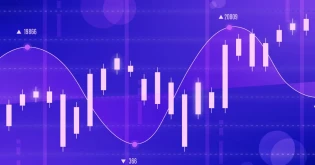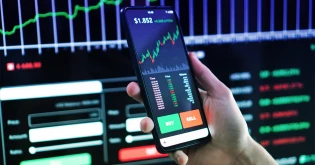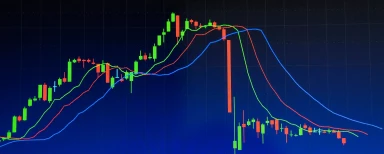-
What is a currency pair?
A currency pair enables the comparison of two distinct currencies' values. Consider the existence of two distinct currencies, namely dollars and euros. The currency pair denotes the requisite amount of euros for the acquisition of a single dollar.
The currency pair comprises of a base currency and a quote currency. The primary currency is denoted as the first listed, while the secondary currency is indicated as the second listed. In the currency pair EUR/USD, the base currency is the euro and the quote currency is the US dollar.
For the sake of simplicity, currencies are assigned unique codes. These codes serve as unique identifiers for each currency. The currency code for the US dollar is USD. These codes facilitate global comprehension of the currency in question.
In currency trading, one has the ability to purchase a particular currency while simultaneously selling another. When placing an order for a currency pair, one purchases the base currency and sells the quote currency. This is the modus operandi for generating revenue through currency trading.
Certain currency pairs enjoy high popularity and trading volume. EUR/USD is the preeminent currency pair in the market. The reason behind its popularity is the high volume of euro to US dollar trades. USD/JPY is a highly sought-after currency pair, representing the exchange rate between the US dollar and the Japanese yen.
It is imperative to bear in mind that a currency pair serves as a mechanism to evaluate the worth of two distinct currencies. This facilitates the determination of the requisite amount of one currency to procure another. That is how cross-border currency exchange occurs.

What are the most common currencies?
These three categories of currency flow in the forex market.
Major pairs - Major currency pairs are the most commonly traded pairs in the foreign exchange market. They involve the US dollar as one of the currencies. There are seven major currency pairs that people trade a lot. These pairs are EUR/USD, GBP/USD, USD/CHF, USD/JPY, USD/CAD, AUD/USD, and NZD/USD.
Minor Pairs - Minor currency pairs are when a major currency is traded with another currency that is not the US dollar. For example, the Euro and the Swiss Franc. These pairs are called minor currency pairs because they are not as commonly traded as the major pairs.
Exotic Pairs - Exotic currency pairs are a bit different. They involve trading the currency of a developing country with a major currency. These pairs are more challenging to trade because the developing country's currency can be affected by things like politics or the economy. Some examples of exotic currency pairs are USD/HKD, USD/SGD, USD/ZAR, and USD/THB.
Most currencies are traded relative to the U.S. dollar (USD). The U.S. dollar (USD) is the currency with frequent transactions.
The next five frequently traded currencies are:
- Euro (EUR)
- Japanese Yen (JPY)
- British Pound (GDP)
- Swiss Franc (CHF)
- Australian Dollar (AUD)
Trading in these six major currencies covers 90% of the trading volume in the global foreign exchange market.
The most dominating currency pair is the Euro/U.S. dollar (EUR/USD).
Easiest Currency Pair to Trade
EUR/USD is the easiest and the most stable and secure currency pair to start with. It is the best option not only among fresher traders but also for expert traders.
This is one of the most traded currency pairs due to global acceptance and high liquidity.
But this pair also shows with a high volatility level and is hard to predict accurately. All global central banks, brokers, and other financial institutions use the pair as the significant trading instrument making it even more difficult to predict.
What is the currency exchange rate?
The determination of the exchange rate between two currencies is based on the relative value of each currency in question. This is commonly referred to as the currency exchange rate.
The aforementioned rates exert an influence on international trade and the cross-border flow of capital. The determination of exchange rates is contingent upon the valuation of both the domestic currency and the foreign currency.
In the month of July in the year 2022, the conversion rate between the United States Dollar and the Euro currency was recorded at 1.20, indicating that an amount of $1.20 was required to procure €1.
The majority of exchange rates are of the floating variety and are subject to fluctuations based on the interplay of supply and demand within the market. The fluctuations in exchange rates have a significant impact on businesses as they affect the cost of supplies and the demand for their products from overseas clientele.
Suggested read: What is forex and How does it work
What is Base Currency?
Traders buy the base currency (right side) and sell the quote currency (left side) while trading. The exchange rate gives the exact info to the buyer on how much the quote currency it will cost to buy a unit of the base currency. The order of currency pairs usually remains the same, which is a common practice in the industry.
For example
EUR/USD = 1.25
USD - Base Currency
JPY- Quote Currency
1 euro value is 1.25 dollars.
How to buy and sell currency?
For trading currency, two terms need to be understood well.
Bid Price - The buying price.
Outgoing Price - The selling price.
The absolute difference between Buying Price and Asking Price is called the Spread.
For illustration -
The Bid/Ask Price of EUR/USD is 1.2100/1.2300.
Spreads = Bid price - Ask Price = 1.2300-1.2100 = 0.02
The trader buys 1 Euro at $1.2100 and sells at $1.2300
The spreads in forex is the primary source of income for traders. The seller's selling price is higher than the buying price in other markets.
What is a Quotation?
A quotation is the Price of the currency.
There are two types:
- Direct Quotation: Price per dollar in other currencies.
- Indirect Quotation: Price per unit of other currencies in U.S. dollars.
The quote is the price at which the currency pair is traded. It is different from the "reference quotation". The reference quotation is information offered by the market maker for reference only.
Best currency pairs to trade
The best currency pairs to trade are the ones that are popular and have certain characteristics. Here are five currency pairs that many traders like to trade:
- EUR/USD: This pair compares the euro to the US dollar. It's popular because it has high trading volume and low spreads. It's also a good way to take positions on the United States and the Eurozone.
- USD/JPY: This pair compares the US dollar to the Japanese yen. It has low spreads and more predictable price movements. The Japanese central bank often intervenes in the market to control exchange rates.
- GBP/USD: This pair compares the British pound to the US dollar. It has become popular due to economic and political events in the UK. It can be volatile, so it's important to set limits to protect your trades.
- USD/CNY: This pair compares the US dollar to the Chinese yuan. It reflects the exchange rate between the two largest economies in the world. US-China tensions can affect this pair, and it can be more volatile when traded offshore.
- USD/CAD: This pair compares the US dollar to the Canadian dollar. The Canadian dollar is influenced by commodity prices, especially oil. Monitoring oil prices can help determine the best time to exchange USD for CAD.
Remember, each currency pair has its own characteristics and risks. It's important to research and understand the factors that can affect their value before trading.
Suggested read: How to start forex trading
What currency pairs should beginners trade?
There are two ways to begin your trade:
- Focus on one trade at a time and develop a familiarity to cultivate time to raise profits.
- Use a set of currency pairs ranging from 10-15 or even a couple dozen.
You do not have to struggle over ten currency pairs.
Here is the list you pair you can trade
Currency Pair
Countries
Currency Name
EUR/USD
Eurozone / United States
Euro / US dollar
USD/JPY
United States / Japan
US dollar / Japanese yen
GBP/USD
United Kingdom / United States
British pound / US dollar
AUD/USD
Australia / United States
Australia dollar / US dollar
NZD/USD
New Zealand / United States
New Zealand dollar / US dollar
GBP/JPY
United Kingdom / Japan
British pound / Japanese yen
AUD/JPY
Australia / Japan
Australia dollar / Japanese yen
NZD/JPY
New Zealand / Japan
New Zealand dollar / Japanese yen
Fundamental analysis for forex beginners
Fundamental analysis is simple, especially if you only trade a one or two currency pairs each day. The domain is to research the macroeconomic data of the countries you are trading currencies.
Interest rates and inflation creates an impact on currency rates. The central banks can impact currency prices by altering interest rates. They do this to safeguard international trading and their economic health.
Analyze GDP (Gross Domestic Products) data and unemployment rates to measure a country's economic health.
Follow an economic calendar so you can track the date with respect to financial data for the currencies you want to trade.
Fundamental analysis is easy if you focus on trading a minor currency pair on daily basis.
Selecting the right platform to trade forex
There are so many platforms available for Forex trading for beginners but understanding the right platform for Forex trading is essential.
Always trade with an international regulated broker with a license for providing a trading platform for your country.
By maintaining the size of your trading, you can focus more on familiarity and developing a trading style. However, it would assist if you also had a top forex service provider which offers a fast execution process and user-friendly interface. You can switch to CapitalXtend as it is ideal for beginners and experts.

















































